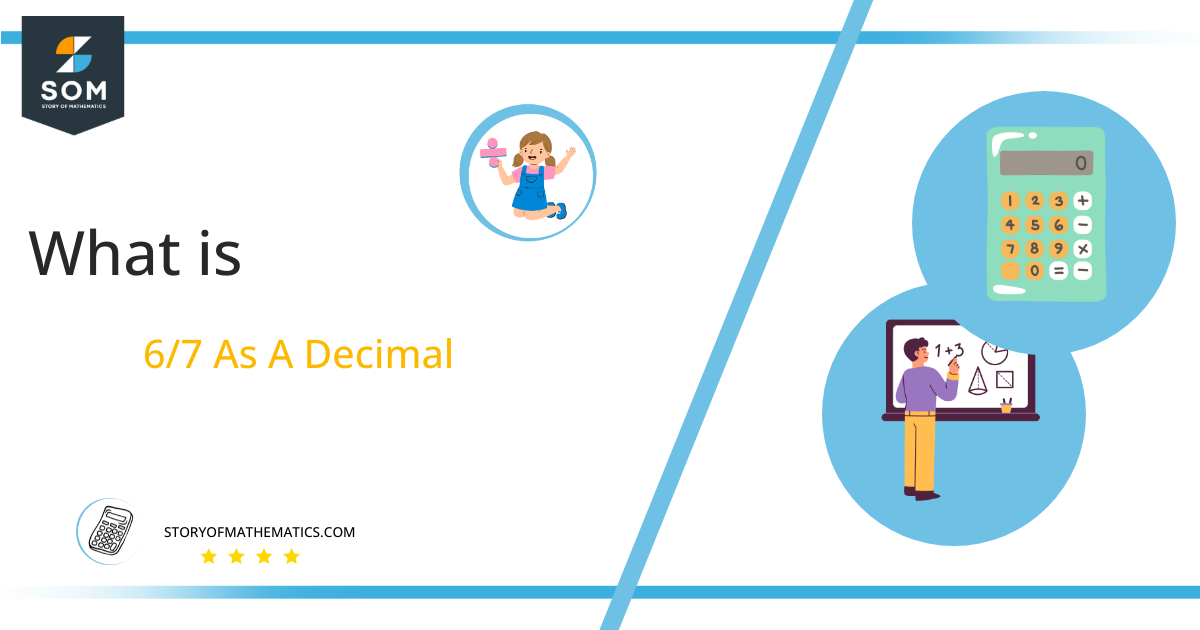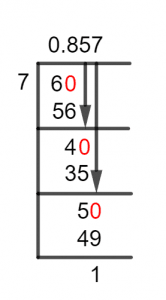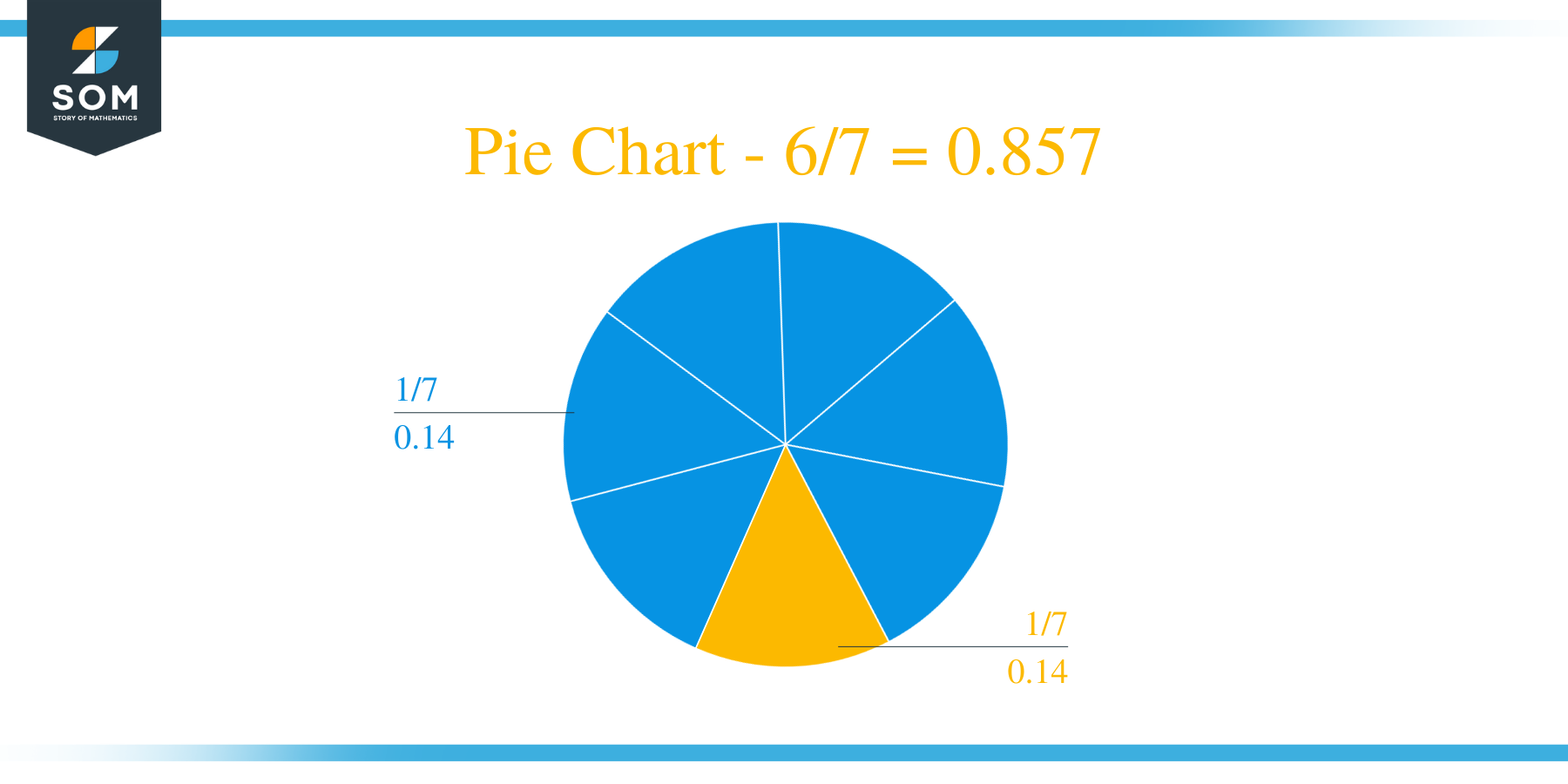What Is 6/7 as a Decimal + Solution With Free Steps
 The fraction 6/7 as a decimal is equal to 0.857.
The fraction 6/7 as a decimal is equal to 0.857.
A Fraction is globally known as a form of expression which describes the mathematical operation Division being applied between two numbers. This is almost always expressed as p/q where p and q both represent non-zero values.
Now, it should be noted that a Fraction can lead to several different types of values resulting from it. But if this fraction is leading up to an Incomplete Division, then it will result in a Decimal Value.
Here we solve for our given fraction 6/7 as follows:
Solution
We start by naming the two parts of the Fraction by their corresponding names. Here, these are Dividends for the numerator and Divisor for the denominator.
Dividend = 6
Divisor = 7
This is the point in time when we start looking at the solution to this fraction as not the answer but the Quotient.
Quotient = Dividend $\div$ Divisor = 6 $\div$ 7
The process for solving a division that is not direct, which means that it is going to be done in steps is called Long Division. Let’s solve our problem into its corresponding decimal value using the Long Division method.

Figure 1
6/7 Long Division Method
We begin by substituting the Division Operand for the fraction between these numbers.
6 $\div$ 7
Another significant read that we can make from this Division is that the dividend is smaller than the divisor. This means that the Quotient will be smaller than 1 and greater than 0.
Now, we introduce another quantity that is only used in Long Division, this is of course the Remainder. The remainder is known as the remaining value resulting from an incomplete division.
So, when two numbers don’t have a Multiple and Factor relationship there is always a remainder produced.
Hence, we begin by taking a Zero to the right of our dividend and adding a decimal point to the Quotient.
60 $\div$ 7 $\approx$ 8
Where:
7 x 8 = 56
Thus, a remainder of 60 – 56 = 4 is produced.
As the division was inconclusive, we carry on with the process of taking zeros to the right of the dividend. Now we have 40:
40 $\div$ 7 $\approx$ 5
Where:
7 x 5 = 35
Therefore, a remainder of 40 – 35 = 5 is produced.
As it is common practice to go up Three Decimal Places for accuracy, we will repeat the process once more and this is done here:
50 $\div$ 7 $\approx$ 7
Where:
7 x 7 = 49
Therefore, a remainder of 50 – 49 = 1 is produced.
Hence, we have our solution which is still not a conclusive division, but it is 0.857, where a remainder of 1 is also produced.
Images/mathematical drawings are created with GeoGebra.
